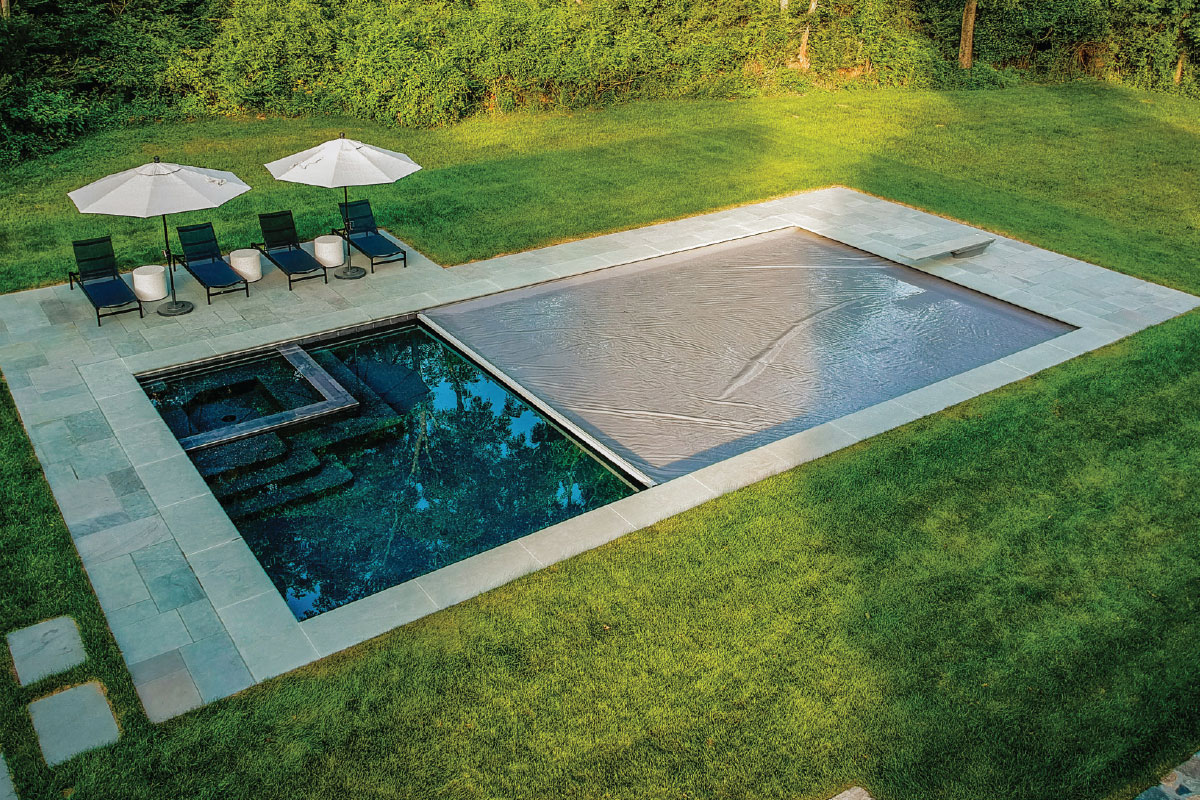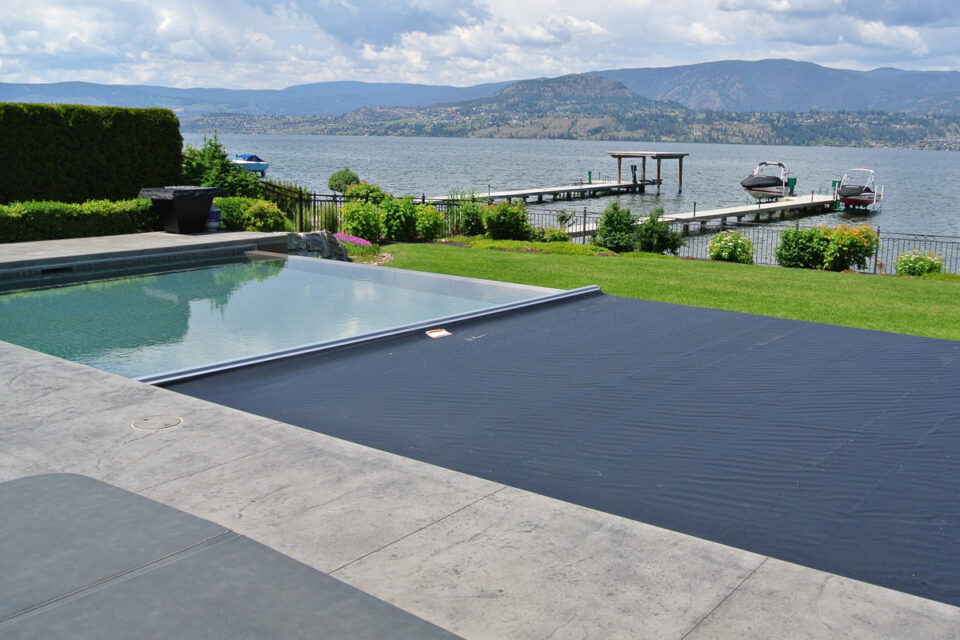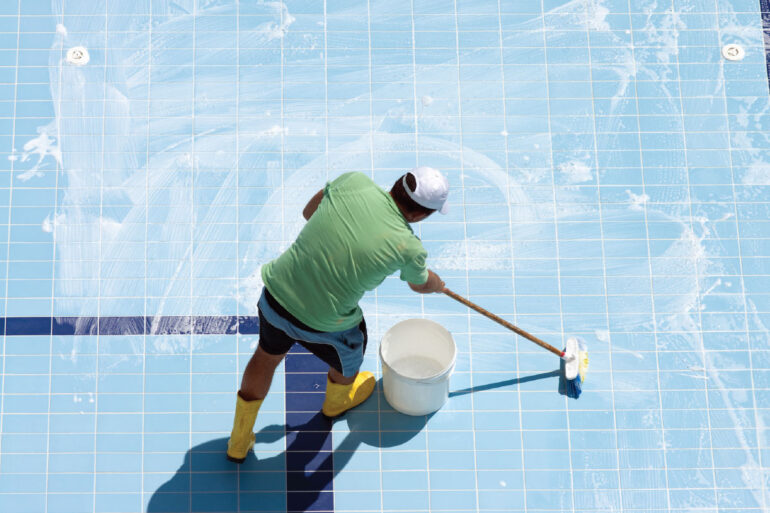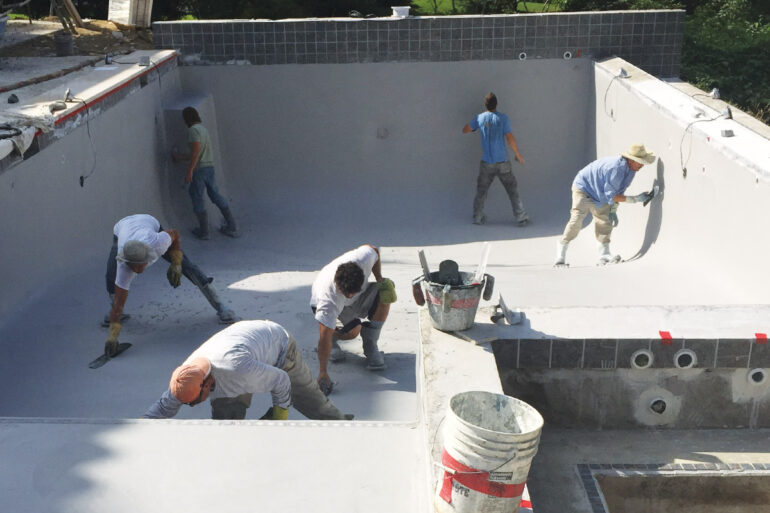Covering Your Investments

When a customer is conceptualizing the pool of their dreams, industry experts will invariably throw in a suggestion or a reminder to include an element that — somewhat ironically — may literally shroud their masterpiece from view.
This of course refers to the pool cover, an element the purpose of which is almost entirely practical but that many designers and manufacturers say is a must for new pool owners. While there is enough variety in materials and colors to create an aesthetically pleasing cover, the cover serves other far more practical purposes.
There are a variety of different kinds of pool covers. Among them are anchored, mesh or solid pool covers; a mesh cover allows for sunlight and water to filter through, while a solid pool cover acts as a barrier between the sun and the pool, as well as any debris or rain. And then there are automatic pool covers, or “autocovers,” which instead of needing anchors, must be installed, and can be engaged or disengaged with the push of a button.
For many, an autocover is the best of the three, but with a potential $20,000 price tag, many customers may find themselves resistant to the idea.
They shouldn’t be, says Allan Horwood of Pool Patrol, a Canada-based swimming pool maintenance company that since 1998 has specialized in automatic pool safety cover repairs. Horwood says he recently heard from an acquaintance who passed on including a cover and lived to regret the decision.
“It was an exotic pool with lots of ledges and spillovers … All those things you see on ‘Pool Kings,’ ” recalls Horwood, making reference to the HGTV reality show that began first airing in 2016, which regularly features elaborate pool designs. When asked about how an autocover might be worked into the design, Horwood says his question was dismissed off-handedly by his colleague, who suggested this was not a concern.
“Fast-forward three years, and he sends me a picture of the pool and says, ‘Hey, Al, any chance we can cover this thing?’ ” Horwood says. “…There was no way.”

Horwood says he recently spoke to another builder who claimed to have just finished building 10 pools, each one with a cover. “He just includes it as part of the pool,” Horwood says. “It’s not something they try to fit in at a later date.”
The benefits of having the foresight to include a cover in the initial design are substantial. Things to keep in mind, Horwood says, include potential structural obstacles, such as elevated sections, spillovers, suspended slabs, elevated hot tubs built in the pool’s center, grotto work, or anything else that may break up the flat level linear shape.
However, he adds, the No. 1 reason for not postponing the addition of a pool cover is safety. If one has children on their property or expect children to be regular visitors, a cover can help prevent a potentially fatal accident. A cover may also save the owner from having to spend thousands of dollars to fence their pool area, which is a requirement in many states.
Another factor is that covers can also provide sizable returns on the customer’s investments, in terms of energy savings and keeping their pool clean. Spending $20,000 on an autocover may not seem as intimidating an investment after they consider that a cover can potentially save them an estimated $2,000 per year. Admittedly, it’s no small expense, but if the choice is to pay early or pay later, cover manufacturers say it’s better to bite the bullet early and thereby reap the benefits of incorporating the cover into the design.
Besides the financial benefits of advanced planning, there are aesthetic ones as well. “To me, the largest benefit of incorporating a cover into the design is that it makes it look more seamless,” says Mike Shadoan, vice president of Westfield, Indiana–based manufacturer Automatic Pool Covers, Inc. “When you’re trying to put a cover on a pool that already exists, it looks more like an after-thought.”
Designing pools for multi-million-dollar homes in Miami, Jonathan Nalepa, owner of design consulting firm, Smart Aquatics, often contends with the homeowners who might be persuaded to use a cover and architects who balk at anything that might compromise their visuals.
“We’re working with professionals like landscape architects and developers who consult on these projects and because they don’t know anything about pools, they want to design these crazy intricate bodies of water to integrate with the home,” Nalepa says. “They want to see the different options for covers. Imagine if we ever presented all these nets and things. They would never approve something like that. They’d say, ‘That’s hideous.’ So we would probably have to do a floating cover.”
Granted, the more complicated the pool is in the design phase, the more challenges that poses to cover creation. An irregularly shaped pool with multiple levels or other offbeat elements may drive up the price of the cover.
But those elements won’t necessarily make including a cover impossible, as might have been the case in previous years. Materials and technology have evolved such that consumers planning to include an autocover aren’t faced with nearly as many restrictions as they would have in the past.
There are individuals who still ascribe to the myth that a cover will only work on a rectangular-shaped pool or on pools of a certain size. Jon Damaska, director and general manager of Specialty and Spa, notes that designs for pools up to 36 feet wide can include covers.
“A lot of people think you shouldn’t use these types of covers on an infinity pool or a negative-edge pool, but we have all the hardware and brackets, and we can get really creative,” Damaska says. “We’re using unique parts and carbon fiber that allows us to do it. They look beautiful and they function really well.”
Damaska points to the development of aircraft-grade stainless-steel cable which — unlike their clothesline-like rope predecessors — doesn’t stretch, rot or break. “We built a bullet-proof system as far as the longevity of the product,” he says. “If you put a cover on your pool, the way they are made nowadays, they will last.”






